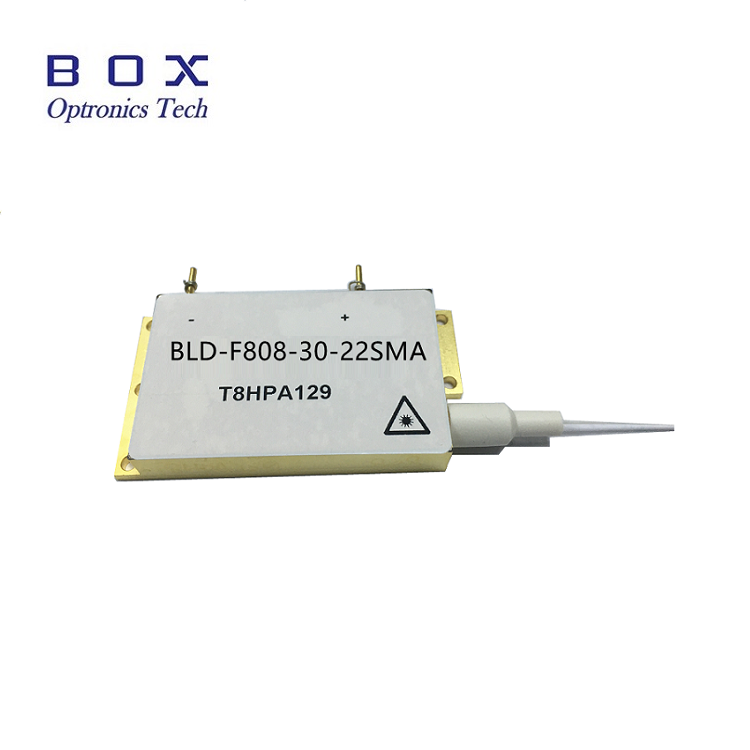Demystifying Multimode Fiber Coupled Laser Diode Modules: Components and Functionality
2024-05-14
Multimode fiber coupled laser diode modules play a pivotal role in modern optical communication systems, facilitating the transmission of high-speed data over short to medium distances. These modules are comprised of several essential components, each contributing to the efficient generation and delivery of optical signals. In this blog, we delve into the main components of a typical multimode fiber coupled laser diode module, shedding light on their functionality and importance in optical networking.
1. Laser Diode:
At the heart of a multimode fiber coupled laser diode module lies the laser diode itself. Laser diodes are semiconductor devices that convert electrical energy into coherent light through the process of stimulated emission. They serve as the light source within the module, emitting optical signals that are coupled into the multimode fiber for transmission. Laser diodes come in various types, including Fabry-Perot (FP) lasers, distributed feedback (DFB) lasers, and vertical-cavity surface-emitting lasers (VCSELs), each offering unique characteristics suited to different application requirements.
2. Collimating Lens:
A collimating lens is employed to transform the divergent output beam emitted by the laser diode into a parallel beam with minimal divergence. This collimated beam ensures efficient coupling of light into the multimode fiber, maximizing optical power transmission and minimizing losses. Collimating lenses are carefully selected based on factors such as wavelength, numerical aperture, and beam divergence to optimize coupling efficiency and beam quality.
3. Fiber Coupling Optics:
Fiber coupling optics comprise lenses and/or lens systems designed to efficiently couple light from the laser diode into the multimode fiber. These optics ensure proper alignment and focusing of the optical beam, enabling precise coupling into the core of the multimode fiber. By matching the numerical aperture and mode field diameter of the laser diode output to those of the multimode fiber, fiber coupling optics maximize coupling efficiency and minimize insertion losses.
4. Fiber Pigtail:
The fiber pigtail serves as the interface between the multimode fiber and the rest of the laser diode module. It consists of a short length of optical fiber, typically terminated with a connector for easy integration into optical systems. The fiber pigtail is carefully prepared and cleaved to ensure optimal coupling efficiency and minimal reflectance at the fiber end face. Proper handling and termination of the fiber pigtail are critical to maintaining low-loss optical connections and maximizing system performance.
5. Temperature Control:
Temperature control mechanisms are essential for stabilizing the operating temperature of the laser diode within the module. Variations in temperature can affect the wavelength, output power, and reliability of the laser diode, leading to performance degradation and potential device failure. Temperature control methods may include thermoelectric coolers (TECs), heat sinks, and temperature sensors, which collectively maintain the laser diode within its specified operating range, ensuring stable and reliable operation over time.
6. Drive Electronics:
Drive electronics provide the necessary electrical current and modulation signals to drive the laser diode efficiently. These electronics regulate the output power, wavelength, and modulation characteristics of the laser diode, allowing precise control over its optical output. Drive electronics may include current drivers, temperature controllers, and modulation circuitry tailored to the specific requirements of the laser diode and application.
Conclusion:
Multimode fiber coupled laser diode modules comprise a range of essential components that work synergistically to generate, control, and deliver optical signals for communication purposes. By understanding the function and importance of each component, engineers and system integrators can design and deploy laser diode modules optimized for performance, reliability, and efficiency. As optical communication technologies continue to advance, the development of innovative laser diode modules will play a crucial role in meeting the growing demand for high-speed, high-capacity data transmission in diverse applications and industries.



